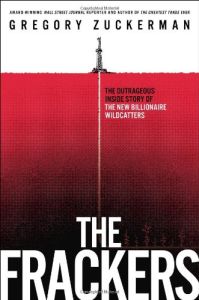Join getAbstract to access the summary!

Join getAbstract to access the summary!
Gregory Zuckerman
The Frackers
The Outrageous Inside Story of the New Billionaire Wildcatters
Portfolio, 2013
What's inside?
Bold entrepreneurs reshaped oil exploration with horizontal drilling and fracking – despite the controversy.
Recommendation
Reporter Gregory Zuckerman offers two books in one. He provides an overview of the fracking industry, explaining its chemistry and processing, and its role in US energy independence. He portrays the pivotal people who built fracking into a stand-alone energy giant. His compelling account reads like a vivid descriptive novel, intertwining history and science with intriguing profiles of the wildcatters, risk takers and oil executives who drove the fracking business through its rough, uncertain launch – with bankruptcy for some and billions for others. Zuckerman is alert to the concerns of environmentalists who oppose fracking, and contend that it causes pollution and, possibly, even earthquakes. Yet, he asserts – perhaps controversially – that “many of the environmental threats can be addressed or are over-stated.” While always neutral politically, getAbstract recommends this significant reporting achievement to entrepreneurs facing adversity and to anyone interested in the fracking industry, the history and politics of the energy industry, and the history of American business.
Summary
About the Author
Gregory Zuckerman is a special writer for The Wall Street Journal and the best-selling author of The Greatest Trade Ever.



















Comment on this summary